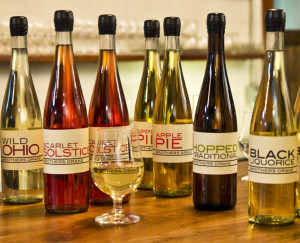Does Digital Printing Matter for Wine Labels?
How much do you know about your wine label? Do you know who designed it? Probably. Where it was produced? Most likely. What type of equipment produced it? Maybe not.
It’s a question you’d hardly think to ask, what type of printing is best? But the answer could make a huge difference to your bottom (or top) line. The type of printing you use could be impacting the quality, cost, and design of your label, without you ever knowing.
The Two Main Printing Processes
There are two main types of printing when it comes to labels, flexographic and digital. Flexographic (flexo) printing uses custom-made rubber plates to apply ink to paper.
Digital printing uses electromagnets to pull ink onto paper, without ever making a plate.
For the most part, both processes create a similar product, a roll of printed labels. As mentioned earlier, the subtle differences between the two processes can make all the difference, especially to a wine maker. Here are the three main differences between digital and flexo printing:
1. Print quality. Digital printing provides superior print quality to flexographic printing. Superior quality means better resolution (smaller type, finer lines, clean edges) and color matching.
This is largely a result of how the ink is placed on the paper. Flexographic places layers of color over one another to create images. If the overlapping plates aren’t perfectly lined up (registered), there will be flooded edges and blurry text.
Since digital equipment is pulling ink onto the paper (using magnetic forces or voltage differentials) it is much more precise in where it is positioning ink. This improved quality comes at a cost.
Digital equipment includes numerous patents and requires more technical expertise, making it more expensive to operate. However, for winemakers, paying an additional cent or two per label is small in comparison with the production cost of the wine. Digital printing’s improved image quality ensures that a good design translates into an exceptional printed piece.
2. Run size. Flexographic printing requires a few costly steps to produce a print job. A flexo printer has to produce rubber plates, install them on press, and then take time to register the plates.
Once all that has been done, a flexo printer can produce labels at a very low unit cost. Since digital printing uses voltage to produce images, there never needs to be a physical plate (hence the name digital printing).
Flexo printing has a high upfront cost, but can produce large quantities for little additional cost once the initial set up is done. Digital printing has no upfront setup, but runs at a slower pace.
This means that for large quantities of one label, flexo is usually the cheaper option, but for small quantities of several different varieties, digital can be much more economical.
For wine producers, digital printing makes it cheaper to release a new variety or special edition, since there are no upfront costs for plates. Once you have decided on the size of your wine label, the only limit is the amount of designs you produce.
If concerns about buying new plates have prevented you from releasing a new batch, or you’ve ever had to throw out labels, digital printing might be a good option.
3. Variable label data. When it comes to food and drink, the details are more important than ever. Wineries have been numbering special editions and batches for years, but it is often either written manually on each label, or printed over the label using an inkjet printer.
Since flexographic printing uses a fixed rubber plate, there is no ability to change the label on a piece-by-piece basis. If you wanted to number a special edition of a thousand bottles, with flexo printing you would have to print the numbers in a second process overtop the printed label.
Digital printing, on the other hand, rebuilds the digital plate with every impression. This allows variable data to be incorporated into the design itself (using custom fonts and even images) at the time of printing.
The many applications for variable data are just starting to surface in the wine industry. From personalized bottles to limited numbering to variable content, it opens up new possibilities in differentiating your wine on the store shelf.
As mentioned earlier, becoming an expert on various printing methods would be a fairly dull pursuit. Digital printing, which is still a relatively new process (the first digital press debuted in 1993), provides a few distinct advantages to wine makers.
If you are interested in improving the quality of your printing, expanding your product offerings, or incorporating variable data into your design, you might want to contact a digital printer.
Andrew Boyd is Vice President at Blue Label Digital Printing in Lancaster, Ohio. Blue Label is a fourth generation printing company that produces labels for many Midwestern wine and spirits producers.




Flexo printing could also do Metallic colors where digital will have a tough time. Combining both gives an added advantage and in some cases the cost does not change much. Presentation is very important when it comes to labels and sometimes the best label sells the product.
I am completely agree with Leonard that by combining both printings one can give an awesome presentation to a label. But while talking to wine labels, most of them are covered with digital printing not a common one.
Thanks for taking the time to read the article! Leonard, great point about metallic ink. Digital printers can use metallic substrates with white overlay to create a similar effect, but it’s still not quite the same.